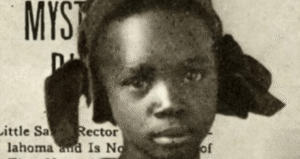St. Patrick’s Day is widely known for its vibrant parades, green-clad revelers, and festive gatherings around the world. But beyond the shamrocks, Guinness, and leprechauns lies a rich history that dates back over a thousand years. Originally a solemn religious feast honoring Ireland’s patron saint, St. Patrick’s Day has evolved into a global celebration of Irish culture. From its origins in early medieval Ireland to its transformation into a worldwide event, this holiday has taken on new meanings and traditions throughout the centuries. In this article, we’ll explore the origins of St. Patrick’s Day, its deep religious and cultural significance in Ireland, and how it has spread to become an international phenomenon.
St. Patrick: The Man Behind the Holiday
St. Patrick, the patron saint of Ireland, was not actually Irish. Born in Roman Britain in the late 4th century, he was kidnapped by Irish raiders at the age of 16 and taken to Ireland as a slave. He spent several years tending livestock in harsh and unforgiving conditions, often in isolation, where he turned to his Christian faith for solace. It was during this time that he developed a deep spiritual connection, praying multiple times a day and seeking strength through his faith.
After reportedly having a divine vision instructing him to flee, he made a daring escape and returned home. However, his journey did not end there. He later felt an unwavering spiritual calling to return to Ireland, the very place of his captivity, as a missionary determined to bring Christianity to the Irish people. Over the years, he dedicated his life to spreading the teachings of Christianity, converting thousands, and establishing churches, schools, and monastic institutions that would become cornerstones of Irish Christian heritage. His influence extended beyond just religious teachings—he helped shape the cultural and educational foundations of early medieval Ireland.
One of the most well-known legends surrounding St. Patrick is his use of the shamrock to explain the concept of the Holy Trinity—the Father, the Son, and the Holy Spirit. This simple yet powerful visual aid made the three-leafed plant a lasting symbol of both him and the holiday. Another famous legend credits St. Patrick with driving the snakes out of Ireland. While this is widely considered a metaphor rather than a literal event—since Ireland was never home to native snake species—it symbolizes his efforts to eradicate pagan practices and establish Christian teachings throughout the land.
St. Patrick’s impact on Ireland was so profound that after his death, believed to have occurred on March 17 around the year 461 AD, the date was designated as a feast day in his honor. Initially, it was a solemn religious occasion observed by the faithful, but as time passed, his legacy extended beyond Ireland, leading to the global recognition of St. Patrick’s Day as a celebration of Irish culture and heritage.
Early Irish Celebrations: A Religious Holiday
For centuries, St. Patrick’s Day was primarily observed as a religious holiday in Ireland. The day was marked by church services, feasts, and solemn reflection rather than the lively festivities we associate with it today. As the feast day of Ireland’s most significant saint, it was a day of prayer and gratitude for the role he played in shaping Irish Christian identity. Many Irish people would attend mass in the morning before gathering with family for a celebratory meal.
Since it falls during Lent, the Christian season of fasting and repentance, the holiday provided a brief reprieve from Lenten restrictions. This meant that for one day, people could indulge in meat, dairy, and other foods that were typically forbidden during this period. Families would prepare traditional Irish dishes such as lamb, bacon and cabbage, and soda bread. Interestingly, the Irish government even declared pubs closed on March 17 until the 1970s to maintain the day’s religious significance and discourage excessive revelry.
The Role of Irish Immigrants in Shaping the Holiday
The transformation of St. Patrick’s Day from a solemn religious observance to a global celebration is largely due to Irish immigrants, particularly in the United States. In the 18th and 19th centuries, waves of Irish immigrants, fleeing famine and economic hardship, settled in cities like Boston, New York, and Chicago. Facing discrimination and hardship in their new homeland, they used St. Patrick’s Day as an opportunity to unite and celebrate their Irish identity.
To maintain a connection to their heritage and assert their cultural presence, they organized public celebrations, including parades and social gatherings. The first recorded St. Patrick’s Day parade was held in New York City in 1762, when Irish soldiers serving in the British army marched in honor of their homeland. Over time, these parades became larger and more extravagant, incorporating Irish music, folk dancing, and traditional dress. Today, New York City’s annual St. Patrick’s Day Parade is one of the largest and most famous in the world, attracting millions of spectators.
St. Patrick’s Day in Modern Times
Today, St. Patrick’s Day is celebrated far beyond Ireland and Irish immigrant communities. Cities across the world hold massive parades, landmarks are illuminated in green, and festivities include music, dancing, and the enjoyment of Irish food and drink. The Chicago River is famously dyed green each year, a tradition that began in 1962 when city workers used a special eco-friendly dye to commemorate the holiday. Other famous celebrations include the Sydney Opera House and the Empire State Building lighting up in green, as well as parades in cities like London, Buenos Aires, and Tokyo.
In Ireland, where the holiday was traditionally more subdued, the celebrations have evolved significantly. Dublin now hosts a multi-day St. Patrick’s Festival, featuring parades, concerts, and cultural events that draw visitors from around the world. While the day is still recognized as a religious holiday, especially in rural areas, the more modern elements of the celebration have brought an influx of tourism and economic benefits to the country.
Food and drink play a central role in modern St. Patrick’s Day celebrations. Irish pubs become hubs of activity, serving pints of Guinness, whiskey, and traditional Irish dishes. In the United States and other countries, some less traditional customs have emerged, such as consuming green beer and dressing in over-the-top green attire. Although these practices may not reflect the holiday’s original intent, they have become an undeniable part of its modern evolution.
Conclusion
St. Patrick’s Day has come a long way from its humble beginnings as a religious feast in honor of Ireland’s patron saint. While its roots remain deeply tied to Irish heritage and Christianity, the holiday has evolved into a worldwide celebration of Irish culture, bringing together millions of people in different parts of the world. Whether observed through quiet reflection, attending a church service, or enjoying a lively parade with friends, St. Patrick’s Day continues to be a unifying occasion that honors the Irish spirit.
The holiday’s journey from a solemn day of prayer to an international festival is a testament to the resilience and pride of the Irish people. Regardless of where or how it is celebrated, St. Patrick’s Day serves as a reminder of the rich traditions, enduring legacy, and global influence of Ireland. So whether you raise a glass in a pub, watch a parade, or simply wear a bit of green, you’re participating in a centuries-old tradition that continues to thrive in the modern world.




